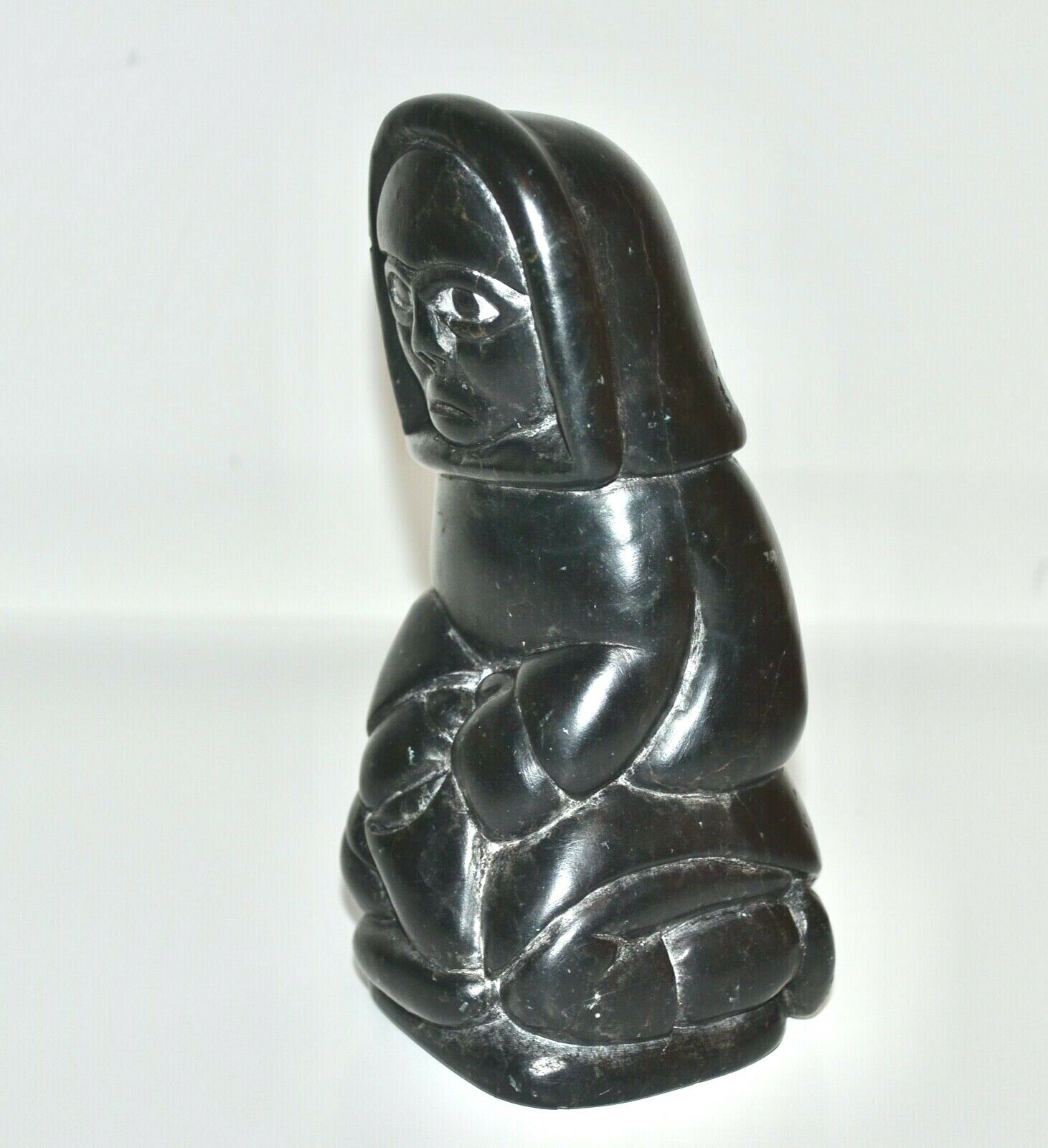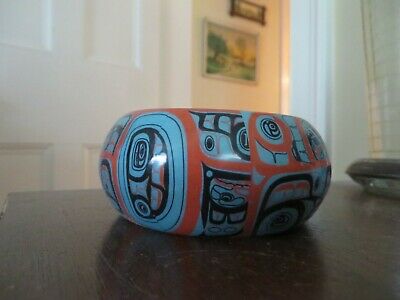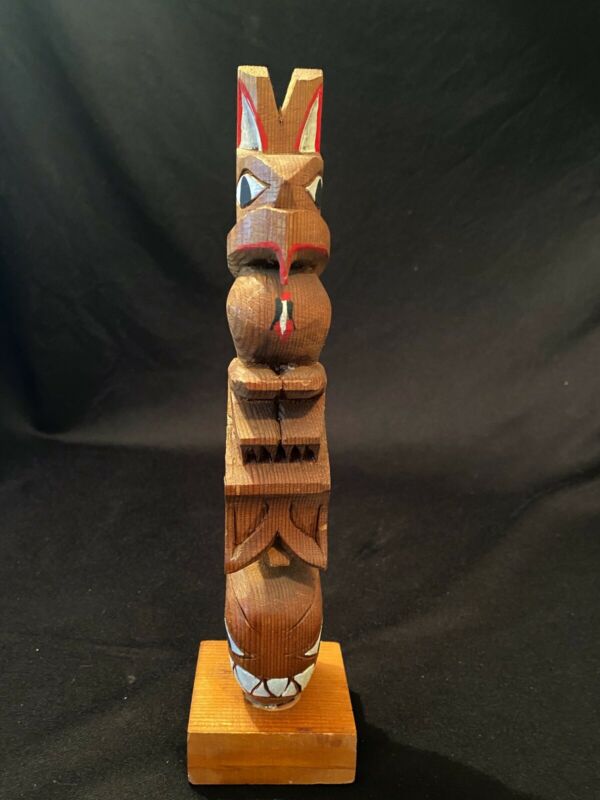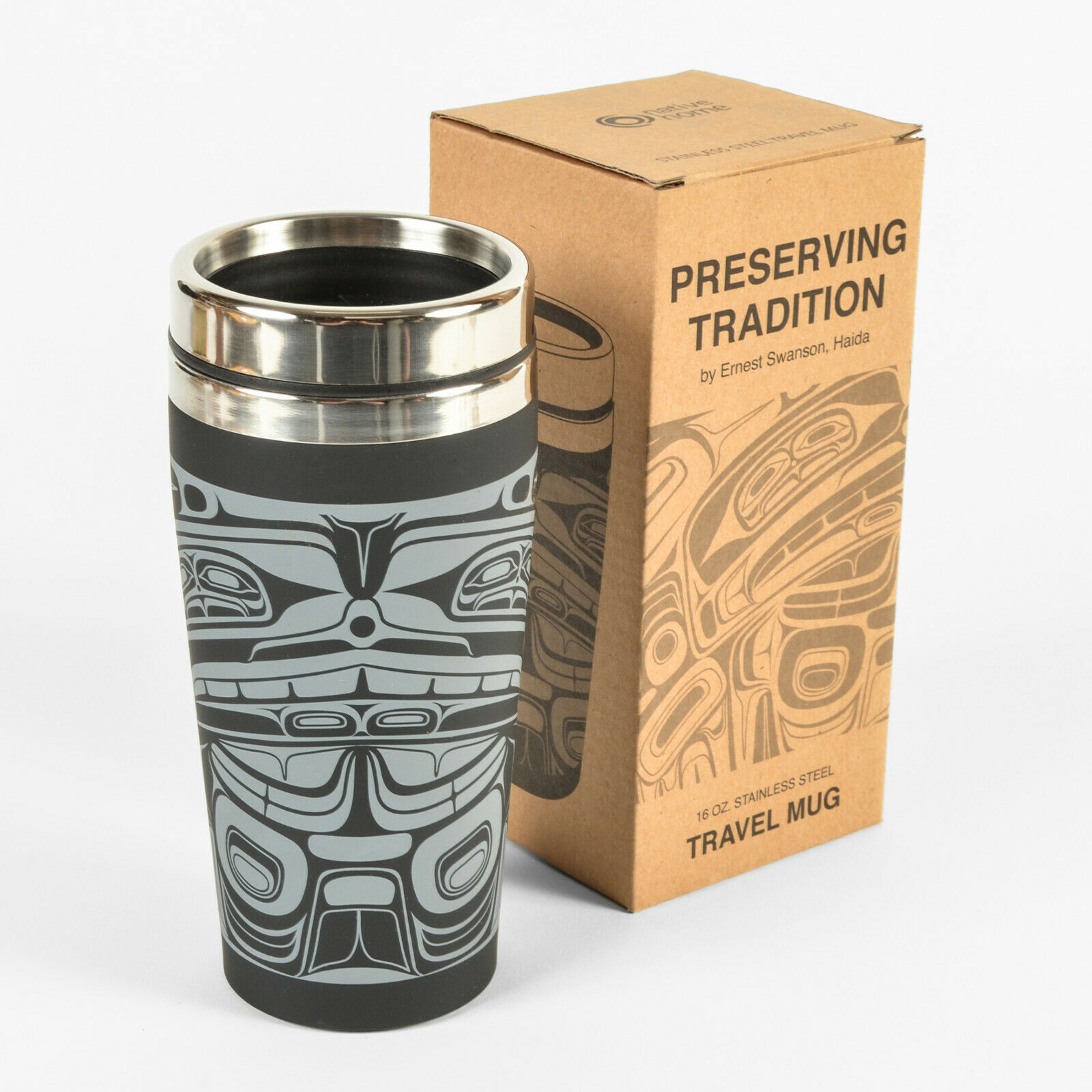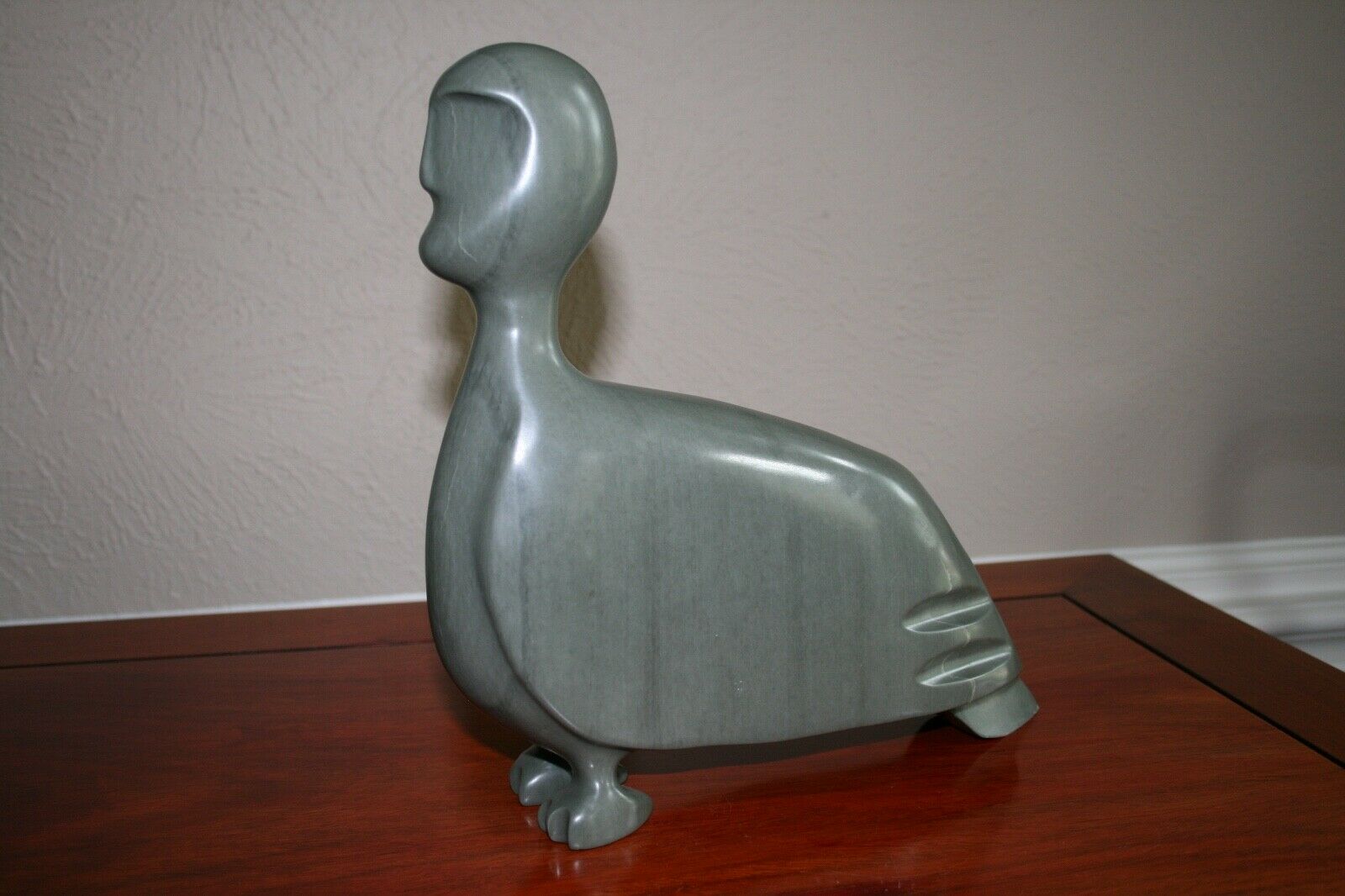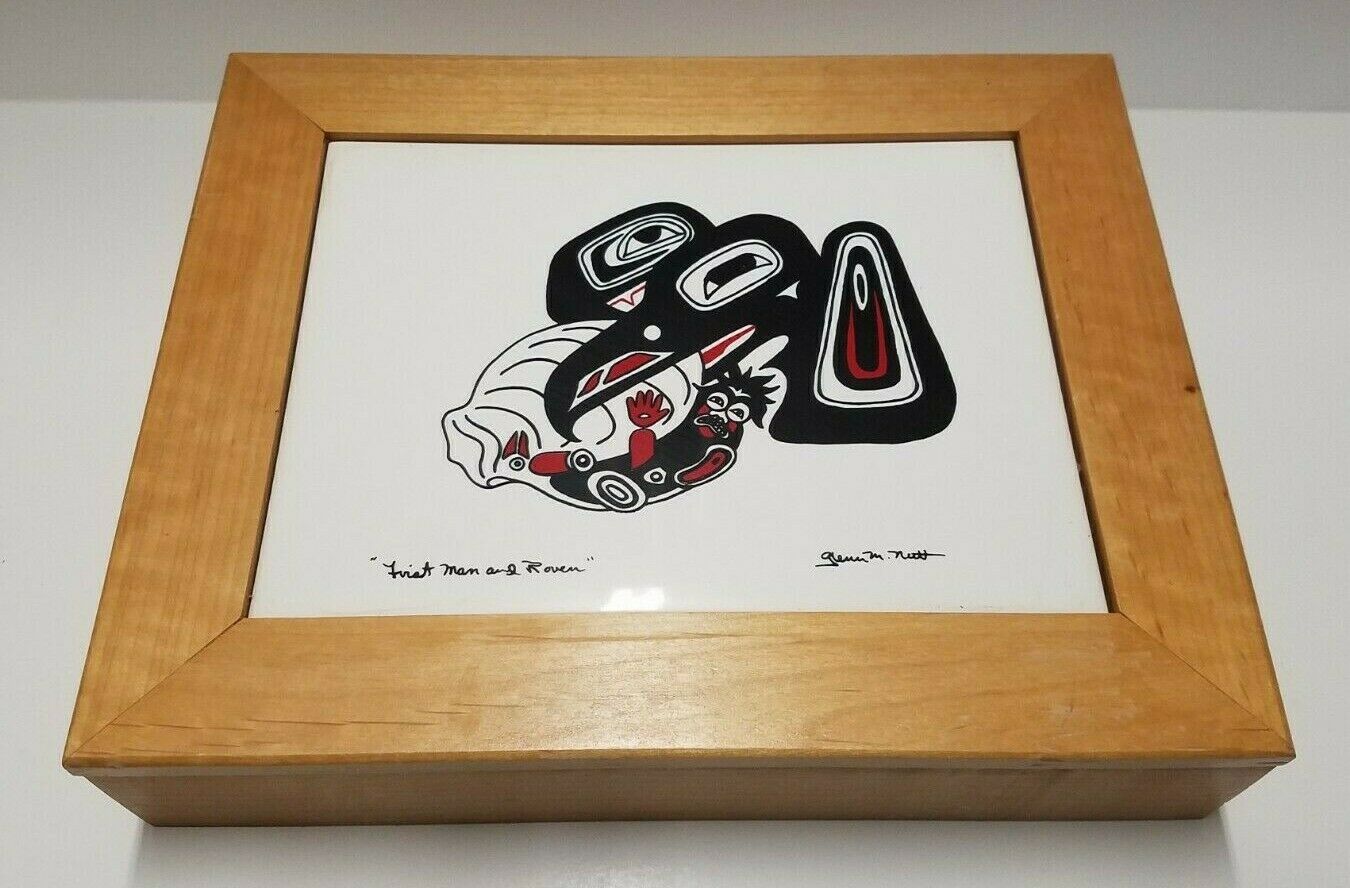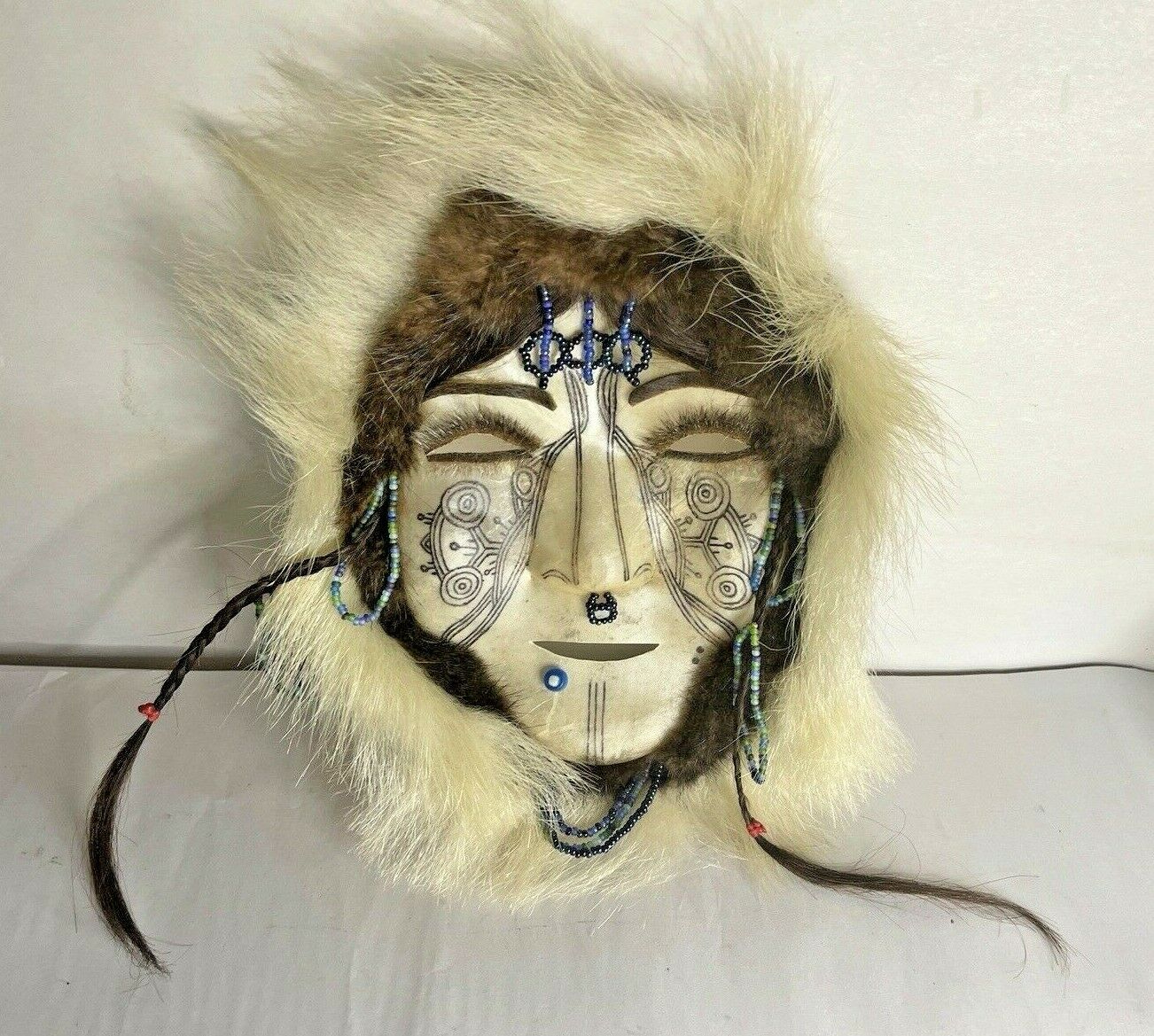-40%
Salmon Mother and Child Northwest Coast Native Art Sculpture
$ 1372.8
- Description
- Size Guide
Description
As a centerpiece or sculpture for the mantle, this rustic and dynamic work will provide a lifetime of enjoyment. Hand-carved and hand-painted, this sculpture depicts a mother salmon with her young. The contrast between the sleek salmon figures and organic driftwood element is very effective, and the piece as a whole measures13" tall by 24" long by 16" wide
.
This is a collaborative piece. The large salmon was created by Oweekeno artist
Harris Smith
, and the three baby salmon were created by Harris' son,
celebrated artist Steve Smith
.
There are five species of Pacific salmon: chinook, coho, sockeye, pink, and chum. All five species hatch in fresh water, mature in the sea, then return to their freshwater homes to spawn. Salmon are honored by all coastal peoples:
this fish is a symbol of regeneration and the life cycle
. Shortages of salmon are traditionally attributed to human disrespect and refusal to live by advice of the elders. Many legends express the importance of appreciating salmon and observing traditional rites of respect, such as placing all of the salmon’s bones back into the water after eating. If this rite is not observed, the salmon tend not to return. In many Northwest Coast cultures, the salmon is a symbol of good luck when seen in pairs. Two salmon represent balance, and a yin-and-yang within the natural world. The salmon is also the symbol for twins in Northwest Coast First Nations culture, and any individual who is a twin can claim salmon as his/her family crest.
Harris' work encompassed carving and painting bowls, platters, sculptures, large totem poles and limited edition prints. He was taught by his grandfather, Lalkawilas (Chief Who Feasts the People til Morning). Carving since 1973, his work won several awards at B.C. Trade Shows and events. Harris' work was influenced by Willie Seaweed, Mungo Martin and Tony Hunt. Harris' two sons, Steve and Rod, both trained under their father and are well established artists. In 2005, Harris, Rod, and Steve were all featured in the 'Changing Hands: Art Without Reservation 2' exhibition that opened at the Museum of Arts and Design, in New York. Harris passed away in 2005.
Steve has been carving and painting since 1987. He was taught by his father Harris Smith (Lalkawilas). He has also worked with his brother, Rod Smith. Steve's pieces include original paintings, sculptures, masks, limited edition prints, etched glass, totem poles and drums. In 2002, Steve completed an 8-foot pole in collaboration with his father and brother, and they finished the pole here at Lattimer Gallery. Steve's distinctive work has been featured in several major exhibitions throughout North America, and his work has been purchased by collectors around the world. In 2005, Steve was featured in the 'Changing Hands: Art Without Reservation 2' exhibition that opened at the Museum of Arts and Design in New York. In 2006, Steve created two public works for the City of Vancouver's 'Spirit Bears in the City' project. In 2007, his work was included in the Burke Museum's 'In the Spirit of Our Ancestors' exhibition, in Seattle. In 2008, Steve received two major commissions for works to be placed in the Vancouver International Airport. These monumental installations were completed in early 2010. In 2009, Steve was included in the 'Challenging Traditions' exhibition at Ontario's McMichael Gallery, a show that was dedicated to exploring innovative and experimental works from the Northwest Coast. In 2013, Steve and his brother were featured in an exhibition titled 'Collaboration & Contrast' at Vancouver's Lattimer Gallery. Steve's work is always evolving and he is always experimenting with form, colour and symbolism.



